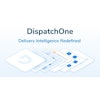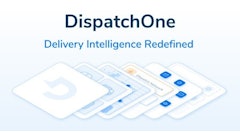
Supply Chain resilience is a subject that’s been getting a great deal of attention in the light of the various global challenges that businesses are facing, such as raw materials shortages, the ongoing COVID-19 pandemic, geo-political and economic struggles, labor shortages, and transportation issues. It’s not surprising, therefore, that there’s a keen focus on improving and optimizing supply chain resilience as organizations seek to predict, address, and minimize the potential impact of disruptions as much as possible, keep operations running smoothly and maintain competitive advantages. Machine Learning (ML) applications can help in forecasting and mitigating organizational risks, and there are several applications relative to an organizational supply chain that are technically viable and proven to deliver value and early successes.
In December 2020, Gartner published a study called Artificial Intelligence Use-Case Prism for supply chain which talks about top AI/ML applications in the supply chain space that can be easily implemented and helps derive maximum value. One of the main applications that the Gartner called out is a simple implementation and has a rapid ROI is “end-to-end risk management.” Risk management is a discipline that does not have a fixed formula to deliver the desired results. So, implementing ML can take the manual effort and anomalies out of the equation and provide a platform for better business decisions. In this article we look at seven areas that procurement leaders can focus on immediately that can help to support supply chain resilience:
- Analyzing and reducing maverick spending – Increased maverick spending can have a detrimental impact on the top lines and can bring procurement processes under increased scrutiny. Using Machine Learning algorithms, expenses can be tagged under the right categories and out-of-contract expense transactions can be stopped from going through.
- Delivery disruption prediction – Delivery disruptions can have a cascading effect on the entire supply chain, which in turn can damage relations with end customers. By analyzing past delivery transaction data, an ML-enabled delay analysis system can read patterns that can lead to a delayed delivery. When such patterns are exhibited again, the system predicts that an order is set to be delayed. Prompts like these can enable P2P teams to take corrective measures, for example, triaging the order to an alternate supplier who can deliver within the given timelines.
- Supplier intelligence – Typically, supplier intelligence is collated during the onboarding process, but is not updated through the supplier lifecycle. To leverage a more current and useful supplier database, it is necessary to have supplier information based on both internal and external factors. Internal factors can be measured by analyzing historical transactions from an ML-based procurement analytics tool. Such intelligent tools can give information at the category level as opposed to evaluating the performance of a supplier towards the business, which prevents rewarding or penalizing a supplier, generally. A robust supplier intelligence tool can give a supplier rating by considering factors like price variation, timeliness, financial capability, sustainable practices, legal well-being, market reputation, and more.
- Price Variance Prediction – Increasing savings and reducing costs are primary focus areas for procurement professionals. For volume orders, even a dollar of saving per unit can deliver an enormous impact to the TCO (Total Costs of Ownership). Juxtaposing two invoices from consecutive months may not exhibit significant price variance. But analyzing historical trends gives a deeper dive into varying costs. ML enables solutions that can detect these price variations, identify cheapest suppliers for a category, and enable better sourcing decisions that keep the supply chain risk-free.
- Detecting anomalies and fraud prevention – Fraudulent transactions have cost the global economy trillions of dollars in the past decade. For businesses, fraudulent transactions may even cost up to 10% of total spending. Such transactions have some patterns that are detectible by Machine Learning algorithms but either cannot be detected by humans or it would take a gargantuan effort to do so. Besides, fraud detection is not limited to large transactions that can come under the scanner easily. Multiple smaller transactions can add up to a huge chunk of these anomalies, so preventing them can become huge savings opportunities.
- Increasing Contract Compliance – Implementing AI and ML in the contracting process has flipped that entire process by making it more automated and risk-free. Using machine learning solutions, out-of-contract spends can be greatly reduced. These algorithms run through contracts, analyze past contracts, and provide insights to make these contracts much more compliant, reducing the risk of poor contracting.
- More Informed Sourcing Decisions – Procurement is a cost center that can flip into a savings center by using better sourcing decisions. Many times, sourcing decisions taken manually may be skewed or biased, may be erroneous, or may not be taken considering multiple factors. These factors cannot be evaluated and aggregated fully without using ML-enabled logic. Sub-par sourcing decisions can deprive companies of any advantages that they may have over their competitors. Machine learning analyzes past transactions to develop a training model able to detect any anomalies in the sourcing decisions with high accuracy and offer alternate and better options to pursue.
In closing, the applications of ML for supply chain are both numerous and versatile. Those that we have touched upon here are just a few of the ways that ML can kickstart the drive to maximize value through improvements in forecasting and mitigating risks. ML applications learn from the data they process and become better at predictions as they analyze more and more data to extract historical trends that drive informed outputs. These solutions are SaaS-based and easy to implement across organizational records systems and are upgradable and extendible. With a typical implementation period of just 3-6 months, and initial actionable results being generated within a few weeks of implementation, cost of ownership can be optimized relatively quickly.



















